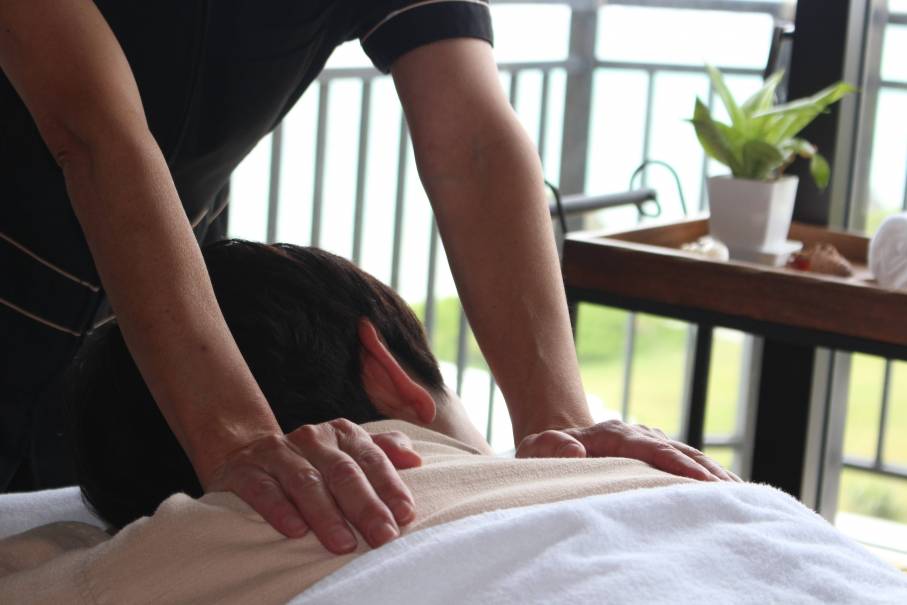
In the realm of alternative medication and alternative recovery practices, reflexology stands out as a increasingly prominent and fascinating technique. This old method, rooted in the idea that certain points on the feet, hands, and ears correspond to various body organs and systems of the body, has actually been gaining traction in the Western globe as a corresponding treatment for different health and wellness concerns.
Comprehending the Foundations of Reflexology Reflexology is based upon the principle that there are reflex areas in the feet and hands that are connected to all parts of the body. Practitioners believe that applying pressure to these specific factors can advertise health and wellness in the equivalent body organs with energy pathways. While the precise systems are not fully recognized by modern-day science, numerous people report substantial take advantage of reflexology sessions.
The concept behind reflexology suggests that the body is divided into 10 vertical areas, each matching to fingers and toes. By using pressure to particular factors within these areas, reflexologists intend to launch obstructed energy and advertise recovery.
The Historical Journey of Reflexology The origins of reflexology can be mapped back thousands of years. Ancient Egyptian tomb paints dating back to 2330 BC illustrate what seems foot and hand massage. Standard Chinese medicine has long identified the link between stress points and the body’s overall wellness. Contemporary reflexology as we recognize it today was developed in the early 20th century by Dr. William Fitzgerald and later improved by Eunice Ingham, usually referred to as the “mother of reflexology.”
The Reflexology Process: What to Expect A typical reflexology session starts with an examination where the expert talks about the customer’s health background and present issues. The client after that removes their footwear and socks and sits pleasantly or exists down. Utilizing their hands, fingers, and sometimes tiny devices, the reflexologist applies differing levels of pressure to details factors on the feet, hands, or ears.
The session typically lasts between 30 to 60 mins, during which clients commonly report sensation deeply unwinded. Some people experience feelings in other components of their body as different factors are promoted, which reflexologists interpret as power relocating with the body.
Potential Benefits of Reflexology While clinical research study on reflexology is recurring, many individuals report a variety of gain from normal sessions. These may consist of:
Reduced anxiety and anxiousness Improved circulation Enhanced sleep high quality Relief from migraines and frustrations Alleviation of gastrointestinal issues Boosted power degrees Support for hormonal equilibrium It’s important to keep in mind that reflexology is typically considered a corresponding treatment and ought to not replace conventional medical therapies. Numerous find it a valuable addition to their general wellness regimen.
Reflexology in Modern Healthcare As rate of interest in holistic health methods expands, reflexology is locating its area in numerous medical care setups. Some hospitals currently provide reflexology as part of their integrative medication programs, especially for individuals taking care of persistent pain, cancer-related signs, or anxiety. Numerous health spas and health centers also include reflexology in their service offerings, recognizing its potential for stress relief and leisure.
JKリフレどっとこむ released in the Journal of Traditional and Complementary Medicine recommends that reflexology may be efficient in minimizing discomfort and improving relaxation, making it an appealing complementary therapy for various problems.
DIY Reflexology: Self-Care in the house While professional sessions can be useful, some standard reflexology methods can be exercised in your home. Easy foot rolls using a tennis round or reflexology tools can assist promote points on the feet. Several people discover this an enjoyable means to loosen up at the end of the day or to reduce foot discomfort from representing lengthy durations.
The Future of Reflexology As a lot more research study is carried out, reflexology may get more acknowledgment in the medical neighborhood. Current studies are exploring its potential applications suffering management, anxiousness decrease, and even as an encouraging treatment for people going through cancer cells therapy. The non-invasive nature of reflexology, incorporated with its prospective to advertise leisure and total well-being, makes it an eye-catching option for those seeking natural approaches to health maintenance.
Whether considered as a holistic art or a science-based therapy kind, reflexology provides an one-of-a-kind approach to understanding and supporting the body’s all-natural healing processes. As we proceed to explore the intricate connections in between different parts of our body, methods like reflexology remind us of the power of touch and the potential for healing that lies within our very own hands and feet.
Understanding the Foundations of Reflexology Reflexology is based on the concept that there are reflex areas in the feet and hands that are connected to all components of the body. Modern-day reflexology as we understand it today was developed in the very early 20th century by Dr. William Fitzgerald and later refined by Eunice Ingham, often referred to as the “mom of reflexology.”
The Reflexology Process: What to Expect A typical reflexology session starts with an examination where the practitioner discusses the customer’s wellness background and present worries. Reflexology in Modern Healthcare As interest in holistic health and wellness methods expands, reflexology is finding its place in various health care settings. DIY Reflexology: Self-Care at Home While specialist sessions can be valuable, some basic reflexology methods can be exercised at home.